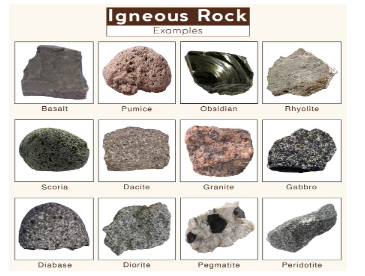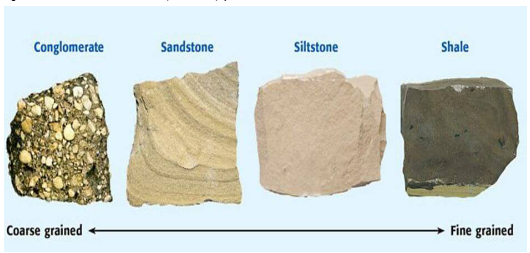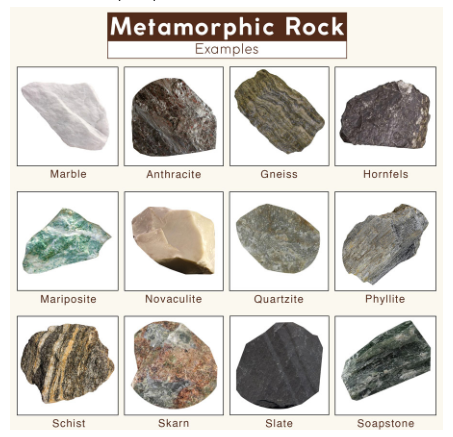Origin-and-evolution-of-universe-solar-system-and-earth / Origin and Evolution of Universe Solar System and Earth / Rocks and its Types
Rocks are combinations of one or more minerals bonded together by chemical means. Feldspar and quartz are prevalent minerals in rock compositions.
Rocks are primarily classified into three groups based on their method of formation: igneous, sedimentary, and metamorphic.
- Igneous Rocks: These rocks form when magma or lava solidifies.
- Sedimentary Rocks: They are created from the deposition of rock fragments.
- Metamorphic Rocks: These rocks originate from the transformation and recrystallization of existing rocks.
IGNEOUS ROCK
- These rocks were formed through the solidification of magma.
- These rocks, created from the solidification of molten rock beneath (magma) and above (lava) the surface, are known as igneous or primary rocks.
- Originating under high-temperature conditions, igneous rocks lack fossils and are unfossiliferous.
- Examples of igneous rocks include granite, gabbro, and basalt.
- Igneous rocks are classified into three types based on the time and place of cooling: plutonic rocks, volcanic rocks, and intermediate rocks.
- Additionally, they are categorised into acidic rocks and basic rocks based on the presence of the acid-forming radical, silicon.

SEDIMENTARY ROCK
- Sedimentary rocks form through lithification, which involves the consolidation and compaction of sediments, resulting in layered or stratified rocks of varying thickness. Examples include sandstone, shale, and others.
- These rocks are produced from the denudation process, which involves weathering and erosion of various rock types.
- Although sedimentary rocks cover 75 percent of the Earth's crust, they only occupy about 5 percent of its volume since they are primarily present in the upper part of the crust.
- There are specific types of sedimentary rocks based on their mode of formation:
- Mechanically formed: Sandstone, conglomerate, limestone, shale, loess.
- Organically formed: Geyserite, chalk, limestone, coal.
- Chemically formed: Limestone, halite, potash.

METAMORPHIC ROCKS
- Metamorphism, derived from the word "metamorphic," which means a "change of form," is a geological process that involves the recrystallization and reorganisation of minerals within a rock.
- This transformation occurs as a result of changes in pressure, volume, and temperature conditions.
- Metamorphism takes place when rocks are subjected to tectonic forces that force them to lower levels within the Earth's crust, or when molten magma rising through the crust interacts with existing crustal rocks.
- During the metamorphic process, some rocks exhibit the arrangement of grains or minerals in layers or lines, which is referred to as foliation or lineation.
- Examples of metamorphic rocks include gneissoid, slate, schist, marble, and quartzite, all of which have undergone changes in their mineral composition and structure due to the metamorphic process.


